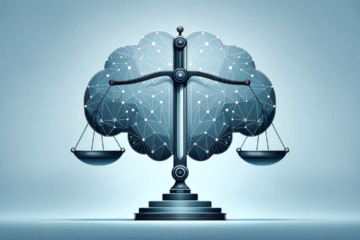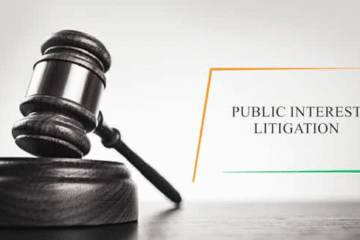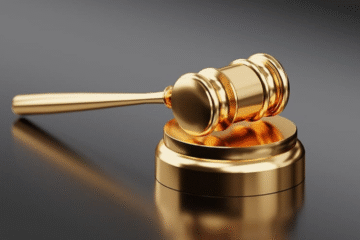
This article is written by Priya Das of 5th Semester of Bikash Bharati Law College, University of Calcutta, an intern under Legal Vidhiya
ABSTRACT:
India is a democratic country where law is for the people of the people and to the people. In order to give justice, eliminate the power concentration the term separation of power is included. Separation of power means the division of power between the branches of government which includes executive, legislative and judiciary. These three organs have different powers and functions. This theory includes the independency of working without interference of the other two organs. This system helps to reduce the arbitration of one orange of government.
The theory of separation of power is not totally applicable. In India the branches of government are interconnected but through this doctrine those organs don’t able to interfere with the work of other branches which create balance of work.
KEYWORDS: democracy, executive, judiciary, legislative, administration, power, government, citizens
INTRODUCTION:
The Constitution of India gives several rights and duties to the citizens. In order to protect them from any kind of misuse of law or government policies. Separation of power the doctrine is applied to the organs of government and it ensures that government is accountable to the people regarding their work. This term is to protect the democracy. If one organ of government has excessive power it can lead to the abuse of power which can result in dictatorship.
Although the theory of separation of powers is not expressly recognised in the Constitution in its absolute form, the Constitution does provide provisions for a fair division of duties and authority among the three branches of government.[1]
BACKGROUND:
The term “separation of powers” or “trias–politica “was initiated by Charles de Montesquieu. For the first time, it was accepted by Greece and then it was widely used by the Roman Republic as the Constitution of the Roman Republic. Its root is traceable in Aristotle and Plato when this doctrine became a segment of their marvels. In 16th and 17th-century British politicians Locke and Justice Bodin, a French philosopher also expressed their opinion regarding this doctrine. Montesquieu was the first one who articulated this principle scientifically, accurately and systemically in his book “Esprit des Lois” (The Spirit of Laws) which was published in the year 1785.[2]
Montesquieu went on to clarify the idea in his own words:
“When the legislative and executive powers are united in the same person, or in the same body or magistrates, there can be no liberty. Again, there is no liberty if the judicial power is not separated from the legislative and executive powers. Where it joined with the legislative power, the life and liberty of the subject would be exposed to arbitrary control, for the Judge would then be the legislator. Where it joined with the executive power, the Judge might behave with violence and oppression. There would be an end of everything, were the same man or same body, whether of the nobles or of the people, to exercise those three powers, that of enacting laws, that of executing the public resolutions, and of trying the causes of individuals.”[3]
CONCEPT:
The term defines that every organ of government should not interfere with the work of another. Every organ should have their own function and an organ should not take part or the work of another organ. This doctrine basically means that there no concentration of power and work should be divided between organs.
THREE ORGANS OF THE GOVERNMENT:
The term separation of power applied to those tree organs which are considered as pillar of government also. Such as:
Executive: This pillar of the government implements and enacts the policies of government and also the laws passed by the legislature. The functions of executive increased along with its functions. President, governor, police are considered as a part of executive.
Judiciary: This organ is the most liberal form of government. Which implements laws, solves the ambiguity in law which ensures the democracy. Which includes Supreme Court, Session court, High court.
Legislature: This pillar is considered as the primary organ of government. Legislature enacts the laws which implemented by executive and ambiguity are resolved by judiciary.
CONSTITUTIONAL SIGNIFICANCE:
There isn’t implied any specific provision for the doctrine separation of power in Constitution of India. But there are several Articles mentioned in Constitution which states several terms of this doctrine.
Article 50 of Indian Constitution states that judiciary must be separate from executive but this is not applicable.[4]
Article 123 states that president of India is the ultimate executive head. And he had the power to exercise the legislative power in emergency situation of the country. [5]
Articles 121 and 211: These provide that the legislatures cannot discuss the conduct of a judge of the Supreme Court or High Court. They can do so only in case of impeachment.[6]
Article 361: The President and Governors enjoy immunity from court proceedings., they shall not be answerable to any court for the exercise and performance of the powers and duties of his office.[7]
CHECKS AND BALANCES:
The judiciary has the power of judicial review over the actions of the executive and the legislature. The judiciary has the power to strike down any law passed by the legislature if it is unconstitutional or arbitrary as per Article 13 (if it violates Fundamental Rights). It can also declare unconstitutional executive actions as void. The legislature also reviews the functioning of the executive. Although the judiciary is independent, the judges are appointed by the executive. The legislature can also alter the basis of the judgment while adhering to the constitutional limitation. Checks and balances ensure that no one organ becomes all-too powerful. The Constitution guarantees that the discretionary power bestowed on any one organ is within the democratic principle.[8]
IMPORTANCE OF THIS DOCTRINE IN DEMOCRACY:
Indian Government have three organs through which government administrate the Country. Through separation of power the work of government is divided for example legislature has the power to Implement laws those laws are enacted by executive and the judiciary solves any ambiguity or dispute if arise. The doctrine of separation of power is not totally applied those organs are separated with their work but those organs are interconnected.
The doctrine of separation of power curtailed the concentration of power of any particular form of government. It helps to secure the people’s right. If all of the organs of government are working with each-other than if there is any fault of any organ in implementing or enacting any laws there will not any organ to criticize those laws. And judiciary is also not able to perform freely. If the government interfere with the decisions made by the judiciary, then proper justice will not made which also infringement of rights of people.
JUDICIAL DECISIONS:
Kesavananda Bharati v. State of Kerala[9]: In this case Supreme Court held that the parliament has power to amend the Constitution but it can’t violate any constitutional provision.
The Honourable Supreme Court in Ram Jawaya Kapoor V State of Punjab[10] held that the Indian Constitution has not indeed recognised the doctrine of separation of powers in its absolute rigidity but the functions of the different parts or branches of the government have been sufficiently differentiated and consequently it can be very well said that our Constitution does not contemplate assumption by one organ or part of the state of functions that essentially belong to another.[11]
In Indira Nehru Gandhi V Raj Narain, Ray[12], CJ observed that in the Indian Constitution there is a separation of powers in a broad sense only. A rigid separation of powers as under the American Constitution or under the Australian Constitution does not apply to India. The Court further held that adjudication of a specific dispute is a judicial function which Parliament even acting under a constitutional amending power cannot exercise. Apart from difficulties inherent in the enforcement of the strict doctrine of separation of powers in the functioning of the modern government, there is also an inherent difficulty in defining, in workable terms, the division of powers into executive, legislative and judicial.[13]
In P Kannadasan V State of Tamil Nadu[14], it was held, “the Constitution has invested the Constitutional Courts with the power to invalidate laws made by Parliament and the state legislatures transgressing Constitutional limitations. Where an Act made by the legislature is invalidated by the Courts on the basis of legislative incompetence, the legislature cannot enact a law declaring that the judgement of the Court shall not operate; it cannot overrule or annul the decision of the Court. But this does not mean that the legislature which is competent to enact the law cannot re-enact the law. Similarly, it is open to the legislature to alter the basis of the judgement. The new law or the amended law can be challenged on other grounds but not on the ground that it seeks to in effectuate or circumvent the decision of the court. This is what is meant by “checks and balance” inherent in a system of government incorporating separation of powers.[15]
JUDICIAL OVERREACH:
The Supreme Court has been accused time and again of pronouncing judgements that are often termed as judicial legislation. This happens when in the guise of giving guidelines and creating principles, they assume the powers of the legislature, for instance, by laying down the basic structure doctrine, the Supreme Court has put limitations on the legislature’s power to make and amend laws. The judiciary through the collegiums system has also been accused of infringing on powers of other branches. The essential function of the judiciary is to interpret the law rather than to be keen in the appointment of judges. After all, ours is a parliamentary form of democracy wherein parliamentarians are elected by people and they have to face the people, they are filling the slogan of “We the People”; as compared to this, judges are enjoying fixed tenure. They are accountable to none as such and they should concentrate on justice delivery rather than the appointments.[16]
CRITICISM OF THIS DOCTRINE:
The greatest and one of the most obvious benefits of the doctrine of separation of powers is that it ensures that each organ of the government functions independently and without any influence or interference from the other two. If any two (or three) functions of the government are combined in the same person or body of persons, rights and liberties of the citizens would be set at naught, and as stated above, that would be the very definition of tyranny. There is, therefore, no doubt that the doctrine must find place in one form or the other in the constitution of every civilised democracy. this theory presupposes that the three functions of the government are independent of, and distinguishable from, one another. In fact, however, it is not possible to draw thin demarcating lines between them and assign each to a water-tight compartment. the modern state is a welfare state which tries to solve complex socio-economic problems of its citizens. If the doctrine of separation of powers was to be applied in a strict sense, the working of the government would not be possible. As observed by Prof. Freedman, strict separation of powers is a theoretical absurdity and a practical impossibility.[17]
Separation of power is not totally applicable in India. The organs of government are interrelated. It is not possible to apply this doctrine completely. This doctrine can lead to the inefficiency of government, it can able to create conflicts between the organs as their powers are separated. This doctrine is impractical and can’t be fully used for functioning of a democratic State.
CONCLUSION:
Though there is no specific provision is mentioned in Indian Constitution regarding this doctrine, there is a huge impact and importance of this doctrine in functioning the State. Through this doctrine the powers are distributed between three organs of government including, executive, legislative and judiciary. This distribution reduces the pressure of work of any particular form. Each organ is doing their own work as it divided between them. If there is any problem arise regarding the implementation or enactment of laws, other organ can criticize those laws. This doctrine helps to protect the right of people mentioned in Indian Constitution.
[1] This article is written by Richa Goel of Banasthali Vidyapith; Priyanka sharma. In this article, has discussed the separation of power and its applicability in India and other countries. It has been published by Rachit Garg. ‘Separation of powers’ available at https://blog.ipleaders.in/separation-of-powers/#Background, last visited on 8th October,2023
[2] Ibid
[3] Ibid
[4] Separation of powers in India by Komal soni | Views 101229 available at https://www.legalserviceindia.com/legal/article-6034-separation-of-powers-in-india.html last visited on 21th October, 2023
[5] Ibid
[6] Ibid
[7] Ibid
[8] Ibid
[9] Kesavananda Bharati v. State of Kerala, (1973) 4 SCC 225; AIR 1973 SC 1461
[10] Ram Jawaya Kapoor V State of Punjab, (1955) 2 SCR 225
[11] Separation of Powers in the Indian Constitution – Relationship between Executive, Legislature and Judiciary Available at https://byjus.com/free-ias-prep/separation-power-indian-constitution/ last visited on 9th October,2023
[12] Indira Nehru Gandhi V Raj Narain, Ray, 1975 AIR 1590, 1975 SCC (2) 159
[13] Separation of Powers in the Indian Constitution – Relationship between Executive, Legislature and Judiciary Available at https://byjus.com/free-ias-prep/separation-power-indian-constitution/ last visited on 9th October,2023
[14] P Kannadasan V State of Tamil Nadu, 26th July, 1996
[15] Separation of Powers in the Indian Constitution – Relationship between Executive, Legislature and Judiciary Available at https://byjus.com/free-ias-prep/separation-power-indian-constitution/ last visited on 9th October,2023
[16] Ibid
[17] Critical Analysis of Separation of Power
By Sarthak | Views 15928 available at https://www.legalserviceindia.com/legal/article-4893-critical-analysis-of-separation-of-power.html, visited on 10th October, 2023




0 Comments